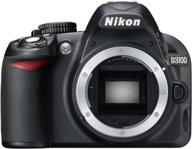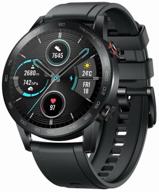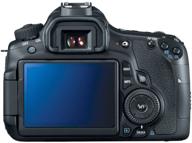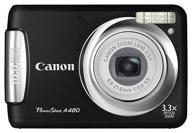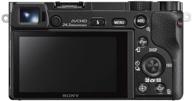
International Version Canon EOS 60D 18 MP CMOS Digital SLR Camera with EF-S 18-55mm f/3.5-5.6 IS Lens Kit Review
54
·
Very good

Media
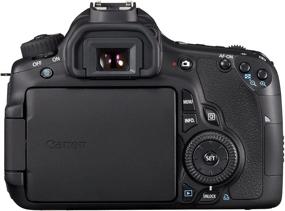
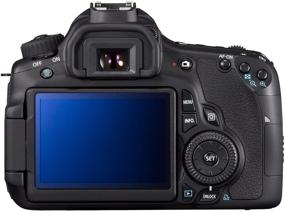
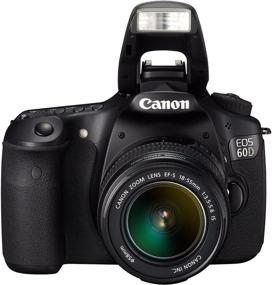
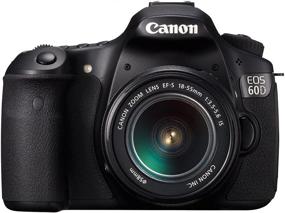
Details
| Brand | Canon |
|---|---|
| Shooting Modes | Manual |
| Optical Sensor Size | APS-C |
| Compatible Mountings | Canon EF-S |
| Continuous Shooting Speed | 5.3 |
Description of International Version Canon EOS 60D 18 MP CMOS Digital SLR Camera with EF-S 18-55mm f/3.5-5.6 IS Lens Kit
Key Features
The Canon EOS 60D is a remarkable digital SLR camera designed for photography enthusiasts and professionals alike. With its 18MP APS-C CMOS sensor, this camera delivers exceptional image quality, capturing stunning details and vibrant colors. The 5.3 frames per second continuous shooting mode allows you to capture fast-moving subjects with precision and accuracy, ensuring you never miss a moment. Additionally, the camera offers 1080p HD video recording with manual controls, empowering you to unleash your creativity in the world of cinematography. The 3.0-inch articulated Clear View LCD with 1,040,000 dots provides a clear and detailed preview of your shots, making it easier to compose and review your images.
Compact Versatility
The Canon EOS 60D is a versatile camera that offers a wide range of capabilities to suit various photography needs. Its compact design makes it highly portable, allowing you to carry it with ease wherever your photographic adventures take you. The included EF-S 18-55mm f/3.5-5.6 IS Lens Kit further enhances the camera's versatility, providing you with a flexible focal length range suitable for capturing different types of shots, from sweeping landscapes to up-close portraits. Whether you're a travel photographer, a budding filmmaker, or a hobbyist looking to explore the world of photography, the Canon EOS 60D is an excellent choice that combines convenience with professional-grade performance.
Unleash Your Creativity
With the Canon EOS 60D, you have the freedom to unleash your creativity and express your unique vision. The camera's manual controls for video recording give you full creative control over your footage, allowing you to adjust settings such as aperture, shutter speed, and ISO to achieve the desired look and feel. The high-definition 1080p video capabilities enable you to capture stunningly detailed videos with exceptional clarity. Moreover, the camera's compact size and lightweight construction make it an ideal tool for education purposes, allowing photography students to learn and experiment with professional-grade equipment. Whether you're a filmmaker, a student, or a creative professional, the Canon EOS 60D empowers you to bring your artistic ideas to life.
Where Can You Use the Canon EOS 60D?
The Canon EOS 60D finds its applications in a wide range of settings, catering to diverse photography needs. Here are some examples of where this exceptional camera can be used:
18MP APS-C CMOS sensor. 5.3 frames per second continuous shooting. 1080p HD video recording with manual controls. 3.0 inch articulated Clear View LCD with 1,040,000 dots.
- Build quality, control, sensor, reliability, swivel display, video, excellent camera JPEG
- Stock lens (18-55)
- a built-in flash, a rangefinder on the lens, decent body proportions, a larger battery, a swivel screen, a metal-plastic body that is dust and moisture-proof, a rangefinder on the lens, and good body dimensions (it fits perfectly in the hand). because to the camera's high aperture, it is possible to capture images indoors without using the flash.
- To my way of thinking, they are essentially non-existent. Nevertheless, who cares about that?
- Small and lightweight (I know that heavier cameras are more prone to blur, but I still consider a light camera to be an advantage), with a fast autofocus, large battery, swivel display, excellent LCD resolution (you can really appreciate the quality of the photo that was taken), affordable price, rapid fire, and usable ISO up to 3200. (in my opinion), None of my lenses, even the Soviet ones I have, have exhibited front-back focus, and neither do the Canon accessories nor their analog counterparts.
- 1. launching when the LCD screen is tilted to the side; Two, the mirror is generating a deafening clapping noise; three, the BB doesn't work properly with incandescent light bulbs. Turning it on and off is a hassle, and the memory card's lid creaks when you remove it. 6. Using Life View's slower focus speed
- 1) The product's quality and country of origin (Japan) 2) The convenience of use. 3) Weight, size. 4) A large capacity for the battery. 5) Screen that can be rotated and has a high resolution. 6) The appearance of a second screen that is only black and white (with backlight) 7) The intuitiveness with which the menu and camera settings can be navigated. 8) Quick burst shooting (5.3 frames per second at maximum jpeg quality - 58 frames per burst, minimum - 7 frames per burst while getting max jpeg and max raw at the same time) 9) Optical image stabilization (Optical image stabilization) 9) The quality of the photos 10) Recording in 1080p with a wide variety of customizable options (even while shooting)
- 1) The lack of a lens cap included in the package 2) Only shoot videos using the manual focus setting (autofocus could come in handy) 3) When taking video with the 60d, you are unable to use the digital zoom (either 5x or 10x), in contrast to the 600d. The sole use it serves in this context is to focus. A significant drawback in my eyes is that, taking into consideration the size of the matrix, the digital zoom actually works fairly well and may have been useful in the movie. It would appear that this can be modified by installing a different firmware. 4) The mode rotation ring has a stopper, which means that you cannot make more than one turn in any direction. Additionally, the choice of the video mode is located at the very stop behind the base mode zone. This means that if you need to shoot a video and you normally shoot in Av mode, you will need to go through the entire circle in the opposite direction in order to twist the ring modes and unlock that long. 5) Preventing modes from entering the ring (a controversial step, for me - this is not necessary and only slows down the switching of shooting modes)
- Although I have nothing but positive feelings about the product, in the sake of making it simpler for you to make a decision, I will discuss both its advantages and disadvantages. Now, onto the positives: 1) A well-made and sturdy construction. There are no gaps or backlashes. Everything is put together in a way that is both clear and of extremely high quality. 2) Aluminum chassis. Aluminum is different. Read up on the properties of the D16T aluminum alloy if you're of the opinion that this is anything to be concerned about. 3) The simplicity of administration. Extremely handy navigation pad (a scroll wheel that also functions as a joystick). 4) Monochrome screen. Someone will get the impression that this is unneeded pampering, but you will not believe how much faster the task will get done as a result of doing this. When I switched from a camera that had this screen to the 600D, I noticed a significant increase in the amount of time it took to make adjustments to the shooting parameters. And while though the touch screen on the 650D is supposed to help speed up the setup process and make it easier for users, it still performs worse than direct control displayed on a monochrome screen. 5) The quality of the photographs taken in the studio. Amazing results can be achieved in photography by using low ISO settings (up to 800 units). A full-length portrait is able to capture every minute detail, down to the texture of the subject's skin and the individual hairs on their head. But, while utilizing lenses that are not made from whales. 6) The conservation of energy The camera has a low demand on the battery and is among the best in its class. When taking into account the use of synchronizers, a fully charged battery should be able to support more than one thousand photographs. One charge is sufficient for around 600-700 shots while using the built-in flash. 7) An autofocus that is quite dogged. If the adjustments are made correctly, the autofocus on USM lenses is not slower than that of the 5dm3, provided that everything is in order. 8) Screen with a rotary motion Pampering, but also assisted in a number of instances when it was required to film from a lower angle (from the floor). But, in order to accomplish this, I was forced to switch to the LV shooting mode, which is extremely slow and makes it impossible to shoot a report using it. Only appropriate for filming that takes place in a relaxed setting. 9) The built-in flash has the capability to wirelessly trigger flashes from the SpeedLite series. 10) A maximum shutter speed of 1/8000 of a second. comparable to high-end professional cameras.
- 1) The matrix has a lot of noise. Once you raise the sensitivity above 800, the noise becomes intolerable. Because of this, taking pictures during the twilight hours is nearly impossible if the camera does not have fast optics or flashes. The only solution is to lengthen the amount of time that the shutter is open, but this means that reportage photography is no longer an option. 2) A memory buffer for bursts When the rate of firing is high enough, the buffer will be full very quickly. When shooting in RAW, the memory can only hold a maximum of seven frames, and the shooting speed is severely reduced. Even the most expensive and quickest SD cards are not capable of saving anything. 3) The automatic white balance feature will make educated approximations in around 70 percent of all situations. It is recommended that the preset options for the balance settings not be used at all because they have never produced the effect that was sought. As a consequence of this, we will either have to manually adjust the white balance such that it is placed on a gray mark each time, or we will have to trust the automation while still carefully examining the film.
- Grip, weight, excellent screen, scroll wheel, remote iso, drive, etc., very decent battery, full video control, good focus and rate of fire for an amateur level, and the possibility of alternative firmware. Grip, weight, and excellent screen, scroll wheel, remote iso, drive, etc. Grip, weight, excellent screen, scroll wheel, remote iso, The sound of a cool shutter.
- Mode dial. Particularly, the lock button, which is completely unnecessary, and the video mode button, which is located in the upper-right corner. A switch that is not very user-friendly. The rubber pad that was under the thumb started to come away almost immediately after it was applied.
- Excellent camera
- No results found
- 1. Screen that can be rotated, which is helpful in a variety of contexts! 2. White balance set entirely by hand. 3. A quality suitable for video. 4. A lightweight aluminum alloy rather than plastic, contrary to what many people believe.
- 1. Price! 23-24k carcass limit! 2. The iso function works perfectly up to 1250, after which it begins to make a noise that is bearable. 3. AWB-sometimes lies. 4. The capricious matrix is crazy about light optics!
- A camera that offers a good value for the price.
- The operation of a memory card is rather slow. There is a gap of up to ten to fifteen seconds in between each shot taken during continuous shooting. This is not noticeable to the layman, and you will not feel it either; but, for the professionals, this can be a very crucial consideration when making a choice.









